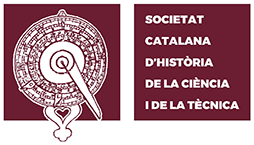Col·loquis de la SCHCT (2020–2021)
Cicle: Situating space technology between lab and field sciences
“Eyes looking up, eyes looking down: blurring the field/lab boundary in meteorology”
Ponent: Kristine C. Harper
Dimecres 3 de febrer 2021, 16h.
Sessió online, amb inscripció prèvia*
(abans de les 14h del 03/02/21):
*(atenció, per motius de ciberseguretat cal inscriure’s abans de les 14h del 04/02/21. Aquesta inscripció és gratuïta i les persones inscrites rebran, poc després, al seu correu electrònic l’enllaç Zoom per a poder atendre el seminari. Per favor, reviseu també la bústia de correus no desitjats si no ha arribat l’enllaç abans del col·loqui).
Kristine Harper is Professor of History and Philosophy of Earth Sciences at Copenhagen University. A meteorologist and oceanographer for twenty years before completing her Ph.D. in History of Science at Oregon State University, her research focuses on the atmosphere and hydrosphere. Harper’s most recent book, Make it Rain: State Control of the Atmosphere in Twentieth Century America (Chicago, 2017), won the Louis Battan Author’s Award from the American Meteorological Society. She is also the author of Weather by the Numbers: The Genesis of Modern Meteorology (MIT Press, 2008) and a co-editor of Exploring Greenland: Cold War Science and Technology on Ice (Palgrave Macmillan, 2016). Her current research is focused on desalination efforts in the mid-20th century.
Coordinadora: Gemma Cirac-Claveras (UPF)
Resum del cicle: Historians of 20th Century science have portrayed a time when science was organized along the lines of a modern division between field and laboratory sciences. It has been described that many scientific and technical institutions, professions and funding organisations rejected the field as an outmoded and second-class arena in contrast with the promise of modern laboratory physics. Earth-orbiting satellites (and space technologies more broadly), usually portrayed as hallmarks of modernity and paradigmatic examples of Big Science, belong to this imagined laboratory science. The three lectures proposed in this cycle, instead, make a plea for reading satellite history also as part of field sciences practices tradition.
This cycle of conversations aims to discuss one of the key questions to the history of 20th century science: the demarcation between lab and field sciences. How these boundaries are negotiated? Why and by whom exactly? How are they contested, modified, or perpetuated? What stories do they tell us?
Program:
- 3 February 2021, 16h: Kristine C. Harper, “Eyes looking up, eyes looking down: blurring the field/lab boundary in meteorology”
- 10 February 2021, 16h: Sebastian V. Grevsmühl, “Exploring the borders of lab and field sciences in Antarctica: Which lessons for remote sensing through satellites?”
- 17 February 2021, 16h: Chunglin Kwa, “The smallest unit of landscape: a concept negotiated between field sciences, aerial photography and remote sensing through satellites”


